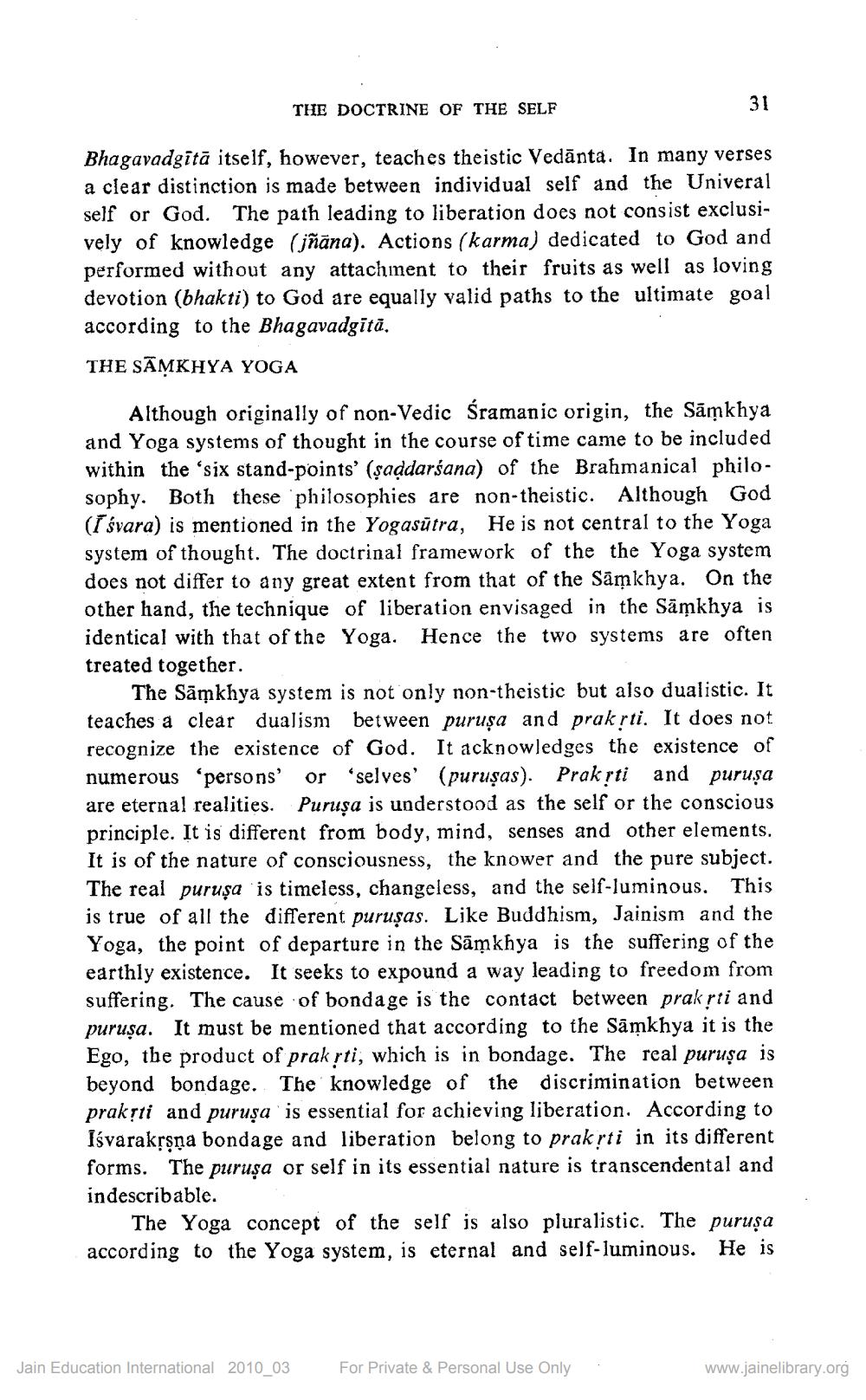________________
THE DOCTRINE OF THE SELF
31
Bhagavadgitā itself, however, teaches theistic Vedānta. In many verses a clear distinction is made between individual self and the Univeral self or God. The path leading to liberation does not consist exclusively of knowledge (jñāna). Actions (karma) dedicated to God and performed without any attachment to their fruits as well as loving
evotion (bhakti) to God are equally valid paths to the ultimate goal according to the Bhagavadgitā.
THE SAMKHYA YOGA
Although originally of non-Vedic śramanic origin, the Sāņkhya and Yoga systems of thought in the course of time came to be included within the 'six stand-points' (şaņdarśana) of the Brahmanical philosophy. Both these philosophies are non-theistic. Although God (I śvara) is mentioned in the Yogasūtra, He is not central to the Yoga system of thought. The doctrinal framework of the the Yoga system does not differ to any great extent from that of the Sāmkhya. On the other hand, the technique of liberation envisaged in the Samkhya is identical with that of the Yoga. Hence the two systems are often treated together.
The Sāmkhya system is not only non-theistic but also dualistic. It teaches a clear dualism between puruşa and prakrti. It does not recognize the existence of God. It acknowledges the existence of numerous ‘persons' or 'selves' (puruşas). Prakrti and puruşa are eternal realities. Purușa is understood as the self or the conscious principle. It is different from body, mind, senses and other elements. It is of the nature of consciousness, the knower and the pure subject. The real puruşa is timeless, changeless, and the self-luminous. This is true of all the different purusas. Like Buddhism, Jainism and the Yoga, the point of departure in the Sāņkhya is the suffering of the earthly existence. It seeks to expound a way leading to freedom from suffering. The cause of bondage is the contact between prakrti and puruşa. It must be mentioned that according to the Sāmkhya it is the Ego, the product of prakrti, which is in bondage. The real puruşa is beyond bondage. The knowledge of the discrimination between praksti and puruşa is essential for achieving liberation. According to Isvarakrsna bondage and liberation belong to prakrti in its different forms. The purusa or self in its essential nature is transcendental and indescribable.
The Yoga concept of the self is also pluralistic. The purușa according to the Yoga system, is eternal and self-luminous. He is
Jain Education International 2010_03
For Private & Personal Use Only
www.jainelibrary.org




